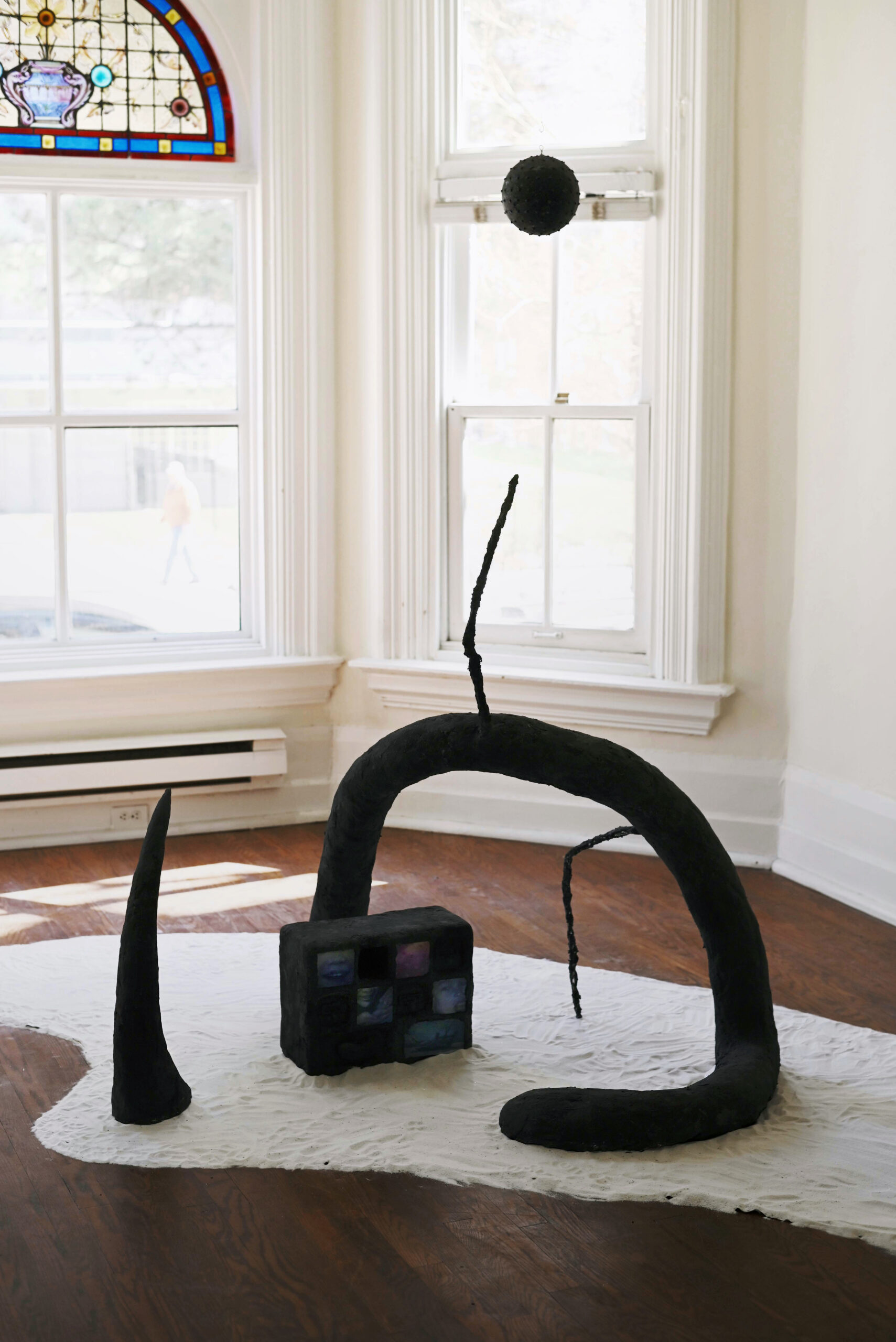Bio
Lucy Lin is a multimedia artist, she was born in China and currently lives in Toronto. Lin’s work draws from religious and cultural research, exploring the connections between boundaries, space, archives, and projection from both futuristic and nostalgic perspectives. Her practice interests include painting, drawing, mixed-media installations, and photography.
Artist Statement
Neither Here Nor Ever is an installation combining sculpture, painting, and sound. Through a phenomenological lens, Lucy Lin reconstructs her childhood home: Gulang Island.
The work originates from photographs taken by Lin’s father twenty years ago, capturing a vanishing world shaped by urbanization and diasporic displacement. Inspired by Roland Barthes, Lin uses cropping and painting to intuitively trace the melancholic punctum—subtle yet piercing details that stir sorrowful resonance. By re-archiving the photographs and embedding them within a sculptural narrative, she constructs a counter-monumental space where the impulse to preserve and the fragility of remembrance simultaneously sustain and collapse the site. Materials such aspapier-mâché, sand, and marble fragments evoke the tension between ephemerality and permanence. These tactile elements, together with the sound of waves symbolizing ancestral callings, emphasize the physical distance of diaspora.
Inspired by Laure Prouvost’s exploration of the subconscious, pre-linguistic space, the installation reimagines the landscape as the vessel of childhood memory. A symbolic threshold at the entrance invites viewers into this heterotopic realm. Inside, they are guided to interact with the installation through peaking, crouching, and walking— nonlinear modes that mirror memory as an embodied and intuitive process. Forms reminiscent of furniture and cabinets recall the archetype of childhood shelters, conjuring feelings of intimacy and belonging. Yet their ruin-like appearance simultaneously signals absence, evoking a ghostly state that resists closure or return.
By summoning the ghosts of Gulang Island, the installation becomes a site of mourning and potential healing—a fleeting refuge for voices forgotten, imagined, or yet to arrive. It gestures toward an elsewhere that is both unreachable and ever-present.






